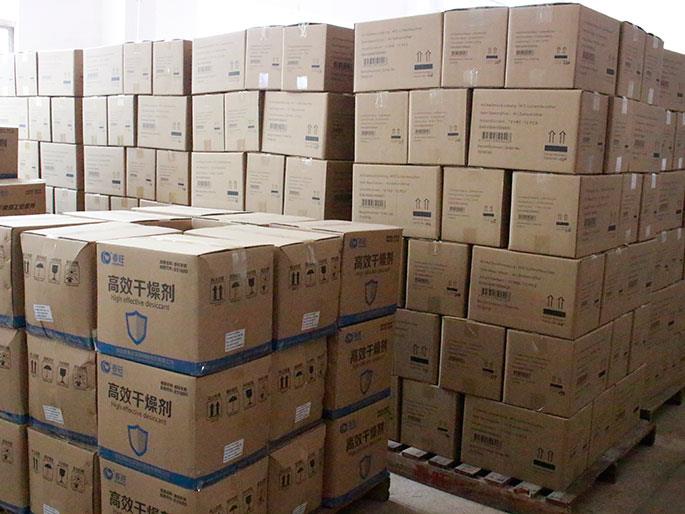Desiccant is a product used for moisture and mildew prevention. It has a wide range of applications and is used in almost every industry. With the increasing demand for product quality and people's awareness of product moisture prevention, more and more customers are ordering desiccant products from Chunwang. However, after purchasing the desiccant, it will not be used up in one time. How to save and use the purchased desiccant product has become the focus of many customers.

For desiccant products to work more efficiently, proper preservation and warehouse storage methods are necessary.
A: Desiccant product warehouse storage precautions
Store the desiccant product in a cool, dry place. It is fireproof, anti-theft, moisture-proof and waterproof.
1. When receiving goods, it should be safely unloaded in the rain-proof and sand-proof loading and unloading areas, civilized unloading, and reasonably stacked. Avoid getting wet, dirty, and damaged when receiving goods.
2. Check the warehouse storage environment. Please ensure that the doors, windows, walls and ceilings are not sealed, no cracks, no cleanliness, etc. All doors and windows remain closed during non-working hours.
3. The warehouse should pay attention to whether rats, termites and other pest control are effective. Please keep the warehouse environment clean and free of pollution, and clean up the garbage and dust in time.
4. The warehouse constant temperature and humidity control is the best when conditions permit. Temperature and humidity requirements are: temperature 25 ° C ± 5 ° C, humidity 60% ± 5%. The constant temperature and humidity warehouse keeps the warehouse door closed during non-operation time, and the personnel enters and exits the constant temperature and humidity warehouse to close the door. Personnel are not allowed to walk around the storage area at will.
5. Under normal circumstances, that is, non-constant temperature and humidity control, more attention should be paid to the closed doors and windows, dry and cool. Avoid excessive moisture intrusion into the warehouse. Please check the floor or floor, clean and no water. If there is water or moisture on the ground, it should be cleaned and dried immediately, stored in the warehouse, and the ground should not be over the tide. Otherwise, the stacked goods cartons are susceptible to moisture.
6. When stacking goods such as desiccant, pay attention to neat, stable and straight line. The goods cannot be close to the wall or the pillars. Please keep a distance, the distance between the general cargo and the wall and column is 0.3~0.5 meters. The cargo cannot block fire equipment such as fire hydrants. Carton stacking should be reasonable, clear planning, neatly placed, and not allowed to occupy logistics and people flow channels.
7. The stacking code of the goods is not super high and does not exceed pressure. Do not invert the arrow mark to prevent damage to the product packaging.
8, because the ground is the most vulnerable to humidity, especially the rainy days, back to the South and other weather. Do not stack the goods directly on the floor or on the floor. Avoid mildew and mildew. Please use a plastic tray or a wooden tray. When using the tray, check that the tray is dry and do not use trays that are too humid. Especially for wooden pallets, the standard moisture content should not exceed 22%. Moisture detector can be used to detect moisture content
9. Try not to stack the goods near the doors and windows, because in a relatively sealed warehouse environment, the outside moisture, glare, etc. are the first to invade from the doors and windows.







All trademarks shown here are for reference purposes only. They are the property of their respective owners, and we are not authorized to sell items bearing such trademarks.
